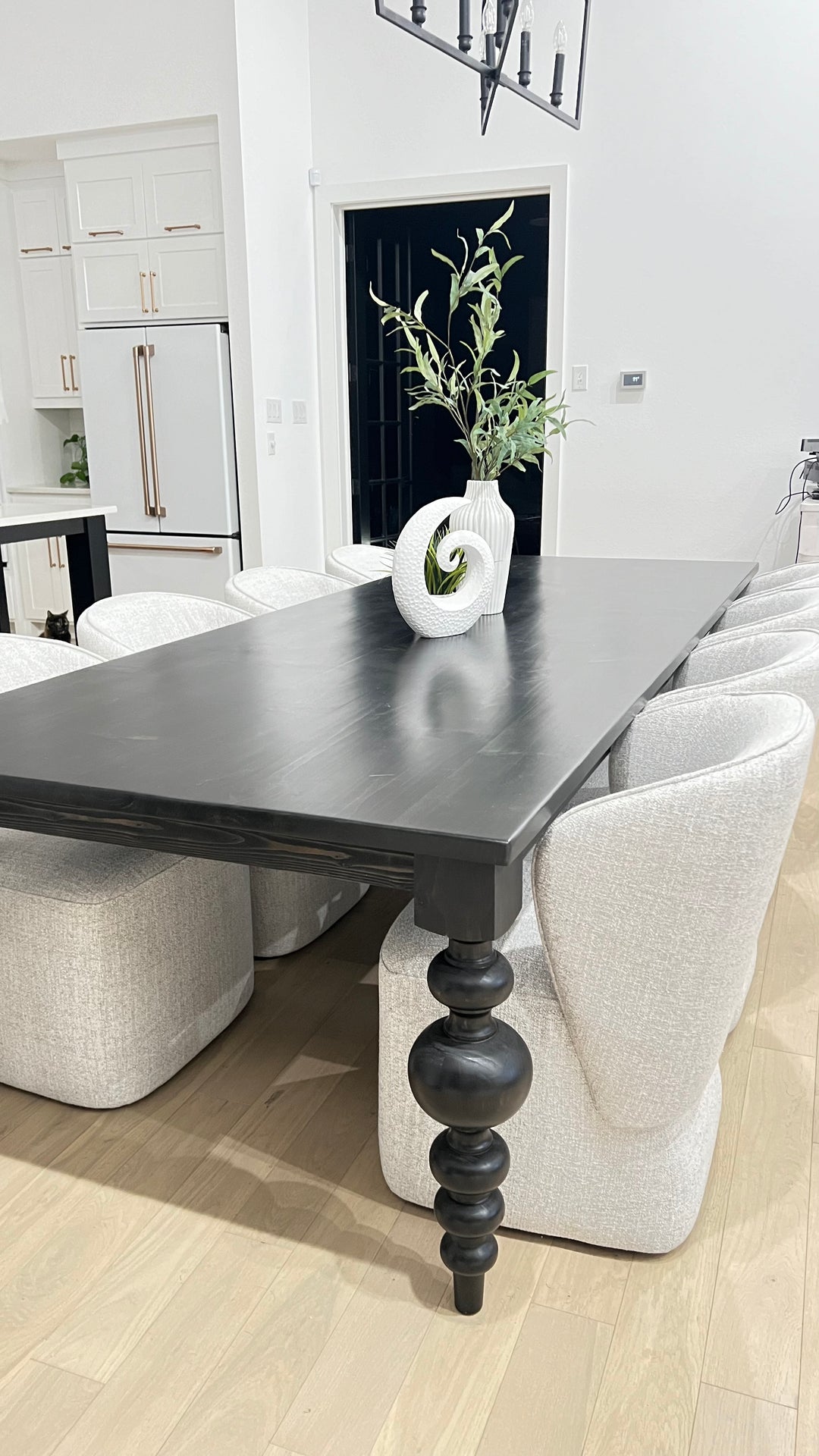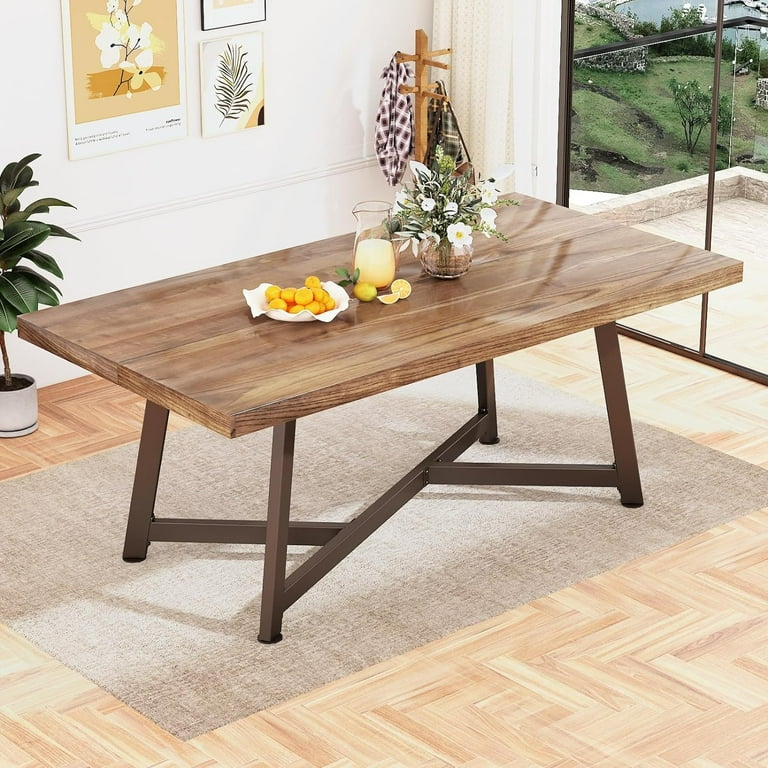Why Custom Dining Room Table Legs Are Worth the Investment
Why Custom Dining Room Table Legs Are Worth the Investment
Blog Article
Specialist Tips for Putting Up Dining Area Table Legs for Optimum Security
When it comes to setting up eating room table legs, achieving maximum security is vital for both capability and aesthetic appeals. The process starts with choosing the appropriate products and hardware, followed by meticulous alignment and factor to consider of weight distribution. Each step plays an important duty in guaranteeing that the finished product stands up to everyday use without jeopardizing security or layout integrity. However, recognizing the subtleties of these components can dramatically affect the total end result. What particular strategies can improve security even better?
Select the Right Legs
When choosing the ideal legs for your eating room table, it is important to think about both performance and aesthetics. The legs you select will substantially influence the total design and security of the table. First, examine the table's intended usage; if you anticipate frequent events, tougher legs, such as those made from solid timber or steel, may be better, as they supply raised longevity and assistance.
Following, consider the height and style of the legs in relation to the table top. Conventional eating tables normally range from 28 to 30 inches in height, so guarantee the legs line up with this standard for comfort. The style of the legs need to complement the layout of the table top-- whether it be modern-day, rustic, or traditional. For example, conical legs can add a modern touch, while turned legs could convey a more traditional visual.

Select Appropriate Equipment
How can the right equipment enhance the stability and durability of your dining-room table? The option of suitable hardware is important to guaranteeing that the legs of your table are securely connected and able to endure routine usage. High-grade screws, bolts, and braces provide the essential stamina to support the weight of the table, as well as any extra loads put upon it during celebrations or meals.
When choosing screws, choose for those made from sturdy materials such as stainless steel or brass, which resist rust and maintain integrity over time. The size of the screws is similarly important; they need to permeate deeply right into the table's framework without endangering integrity. For bolted links, consider utilizing lock washers to avoid loosening up because of vibration or motion.
Additionally, making use of edge brackets can add extra assistance, specifically for larger tables or those with larger tops. These braces distribute weight evenly and aid maintain the table's form. Ensuring that the hardware you select is appropriate for the specific products of your table will better improve its total security and longevity, permitting you to enjoy your dining experience for several years ahead.
Ensure Correct Alignment
Correct positioning of dining area table legs is important read the article for both aesthetic appeal and practical security. Misaligned legs can bring about an uneven tabletop, which may not just be visually uninviting but also endanger the table's functionality. To achieve optimal placement, begin by measuring the distance from the table's edges to the leg add-on points. This makes sure that each leg is positioned equidistant from the edges, developing a well balanced appearance.
Make use of a degree throughout installment to validate that each leg is perpendicular to the tabletop. This step is essential, as also small disparities can escalate right into significant stability problems with time. It is a good idea to mark the desired leg settings official website on the bottom of the table with a pencil or masking tape prior to protecting them. This practice functions as an aesthetic overview, enabling modifications as required.
In addition, verify the placement after the preliminary screws are tightened, as changes might be essential prior to fully securing the equipment. By focusing on appropriate positioning, you not only boost the table's total design but additionally ensure that it continues to be functional and stable for years to find.

Take Into Consideration Weight Distribution
After making sure correct placement of the dining room table legs, it is necessary to take into consideration weight circulation to improve stability and capability. dining room table legs. Correct weight distribution is essential in stopping tottering and ensuring that the table can support its designated lots without risk of tipping or falling down
When positioning the legs, ensure they are put at equivalent distances from the facility of the table to evenly distribute the weight throughout the structure. Think about the weight of the table top and any items that will often hinge on it, such as tabletop devices or decorative items. Tables with heavier surfaces must preferably have legs located closer to the corners, as this optimizes the base of support and decreases the risk of instability.
In addition, if the table is meant for use in a high-traffic area, take into consideration making use of larger materials for the legs or adding maintaining elements, such as cross-bracing or a reduced shelf - dining room table legs. These adjustments can assist keep balance and avoid shifting throughout usage. Inevitably, great post to read a well-considered weight circulation strategy will dramatically improve the table's general efficiency, ensuring it stays a practical and eye-catching focal point for your eating space
Test Stability Prior To Usage
Checking the security of the eating space table prior to usage is an important step that ought to not be ignored. If the table shows instability, determine the legs or joints that may require adjustment.
Following, examine that all screws and bolts are tightened correctly. Loose connections can cause instability and possible damage in time. If required, utilize wood adhesive on joints to boost security, guaranteeing to permit appropriate drying out time.

Conclusion
Finally, the installment of dining space table legs requires mindful factor to consider of products, weight, equipment, and placement circulation to achieve optimum security. By selecting tough legs and high-grade fasteners, ensuring specific placement, and distributing weight uniformly, the architectural integrity of the table can be significantly boosted. Carrying out a stability test prior to regular use better ensures that the table will hold up against daily pressures, thereby providing a safe and dependable dining experience.
When it comes to installing eating room table legs, achieving maximum security is vital for both capability and aesthetic appeals. The legs you pick will considerably impact the overall design and stability of the table (dining room table legs). Standard eating tables commonly range from 28 to 30 inches in height, so ensure the legs straighten with this standard for convenience.Correct alignment of eating space table legs is crucial for both aesthetic appeal and functional security.In final thought, the installation of dining area table legs needs mindful consideration of products, weight, hardware, and placement circulation to achieve maximum security
Report this page